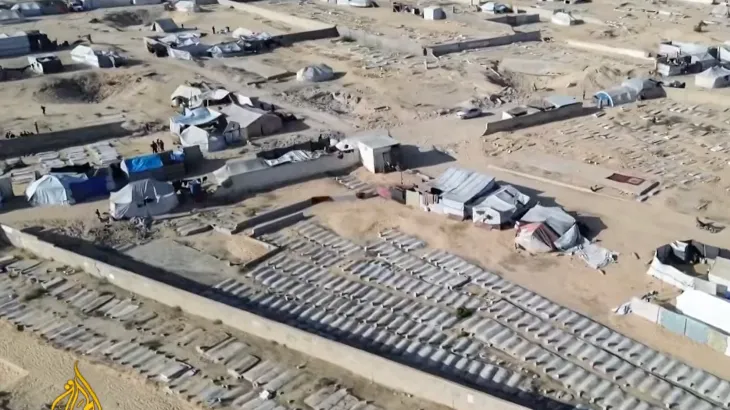
Amid the devastating destruction of homes across Gaza, tens of thousands of displaced Palestinians are turning to graveyards as temporary shelters, highlighting the severity of the humanitarian crisis in the territory. Families with nowhere else to go are pitching tents among tombstones, transforming cemeteries into desperate havens for the living.
Displacement Crisis Intensifies
“This graveyard wasn’t meant for the living,” reported Al Jazeera’s Hind Khoudary from Khan Younis in southern Gaza. “But today, it is home to dozens of families who have nowhere else to go.”
UN estimates indicate that approximately 1.9 million people – nearly 90 percent of Gaza’s population – have been displaced due to ongoing hostilities. Many have been uprooted repeatedly, some ten times or more, as they flee aerial bombardments and ground assaults.
Rami Musleh, a father of 12 displaced from Beit Hanoon, said the psychological toll is immense:
“For parents, the emotional trauma is heavy. Raising children among tombstones compounds the anguish of losing homes and livelihoods.”
Residents like Sabah Muhammed describe graveyards as no longer sacred, stating:
“Graveyards, once sanctuaries for the dead, are now silent witnesses to the living crisis. No water, no electricity, no privacy—just the bare minimum to survive.”
Shelter Shortages and Humanitarian Challenges
With northern Gaza and parts of Gaza City evacuated, southern areas have become overcrowded with displaced populations. Many families cannot afford even minimal private land to pitch tents and rely entirely on scarce humanitarian assistance.
The UN Relief and Works Agency (UNRWA) reports that 61 million tonnes of rubble now cover Gaza, erasing entire neighborhoods. Families sift through the ruins for water and shelter, struggling to survive despite a fragile ceasefire that has been in place since October 10, 2025.
Even with the ceasefire, Israel continues to restrict humanitarian aid, particularly in northern Gaza. Aid deliveries are mainly being routed through the Karem Abu Salem (Kerem Shalom) crossing, while northern border crossings remain closed.
International Response and Legal Rulings
The International Court of Justice has ruled that Israel must allow humanitarian aid into Gaza, stating that the blockade cannot be used as a method of warfare through starvation. Aid agencies continue to press for increased access to vulnerable populations in the north and south.
Despite these legal rulings, the ground reality remains stark: graveyards, once reserved for the deceased, are now shelters for the living, underlining the urgent need for humanitarian support and reconstruction.
Human Stories from Gaza
- Families living among tombstones have no electricity, water, or sanitation, relying on minimal supplies from UN and local NGOs.
- Displaced children face severe trauma, with schools and safe spaces destroyed, forcing them to grow up amid ruins.
- Local residents emphasize the desperation and dignity crisis, stating that cemeteries have become the only remaining free land for survival.
Key Takeaways
- Tens of thousands of Palestinians are using graveyards as temporary shelters due to home destruction.
- UN estimates 1.9 million people displaced, many multiple times.
- Over 61 million tonnes of rubble cover Gaza, erasing neighborhoods.
- Israel continues to restrict humanitarian aid, especially in northern Gaza.
- The ICJ ruled that starvation cannot be used as a warfare tactic.
Leave a Reply